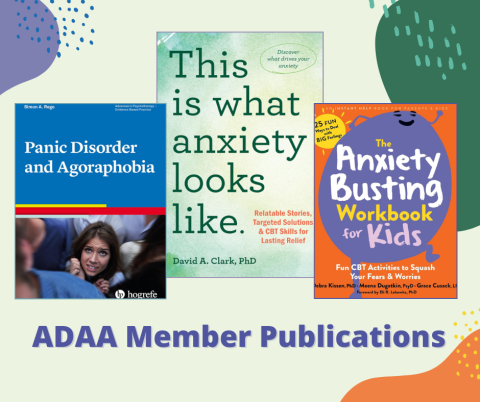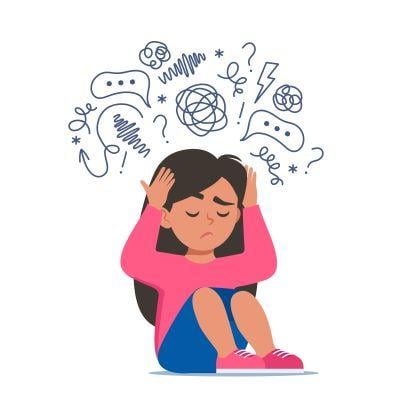What are BFRBs?
BFRBs are repetitive behaviors in which people use their fingers and/or tools in self-grooming behaviors that results in unintentional damage to the body, despite efforts to try and stop the behaviors. Unlike other obsessive-compulsive related disorders (OCRDs), there is often a pleasurable component to BFRBs as people are engaging in the behavior.
The most common BFRBs are hair-pulling (Trichotillomania), skin-picking (Excoriation), nail biting (Onychophagia), and cheek biting (Morsicatio Buccarum). These behaviors can be physically dangerous, leading to hair loss, skin infections, and scarring.
How are BFRBs Diagnosed?
Although the behaviors or consequences of the behaviors might first be noticed by a hair stylist, dermatologist, or dentist, individuals exhibiting these behaviors are most appropriately referred to a licensed mental healthcare provider for diagnostic evaluation and treatment, and preferably one who has experience and specializes in treating OCRDs.
There are two official diagnoses for BFRBs – Trichotillomania and Excoriation, while other BFRBs can be given the diagnoses of Unspecified Obsessive-Compulsive and Related Disorder, with a designation of Other Body-Focused Repetitive Behavior Disorder.
Based on criteria set forth by the Diagnostic and Statistical Manual of Mental Disorders (DSM), the current edition, the DSM 5-TR, sets three primary criteria for the diagnosis of Trichotillomania – repeated hair-pulling resulting in hair loss, repeated attempts to decrease or stop, and that the behavior causes clinically significant distress or impairment. Criteria for Excoriation is similar, with the primary criteria being recurrent skin picking resulting in skin lesions, repeated attempts to decrease or stop the behavior, and cause clinically significant distress or impairment in functioning. It’s also important to note that with both diagnoses the behaviors cannot better be attributed to another disorder, as the behavior can be a symptom of other conditions.
Who Gets BFRBs?
- Approximately 1%-2% of people in the U.S. have Trichotillomania over a 12-month period (DSM-5-TR)
- Although women more frequently self-identify as having Trichotillomania than men, at a ratio of 10:1, (DSM-5-TR) there is likely no significant gender difference (Grant, J. E., Dougherty, D. D., & Chamberlain, S. R. (2020). Prevalence, gender correlates, and co-morbidity of trichotillomania. Psychiatry Research, 288, 112948.)
- An estimated 1.7% of U.S. adults currently have Trichotillomania (DSM-5-TR)
- Developmentally normal hair-pulling may be seen in infants, and typically resolves itself (DSM-5-TR)
- An estimated 2.1% of U.S. adults currently have Excoriation, with a lifetime prevalence of 3.1% (DSM-5-TR)
- Trichotillomania and Excoriation most often has an onset of adolescence, often coinciding with puberty (DSM-5-TR)
- The target areas of hair pulling and skin picking may vary over time (DSM-5-TR)
- People with OCD are more likely to develop BFRBs that people without OCD (DSM-5-TR)
How are BFRBs Treated?
The evidence-based treatments for BFRBs all fall under the umbrella of Cognitive Behavioral Therapy (CBT).
One of the two primary interventions for BFRBs is Habit-Reversal Training (HRT). In this treatment, patients focus on engaging in behaviors that prevent them from doing the BFRB. This is done through psychoeducation and functional analysis, awareness training, stimulus control, and competing response training.
The other therapy for BFRBs is the Comprehensive Behavioral Treatment Model (ComB). With ComB, people learn to identify five components to their BFRBs – sensory, cognitive, affect, motoric, and place – and by changing some of those, improve the BFRB.
Two additional treatments that research has shown to help bolster the above treatments are Acceptance and Commitment Therapy (ACT) (which can also be a stand-alone treatment) and Dialectical Behavioral Therapy (DBT). ACT helps people to identify their values and then act in accordance with those values, rather than the disorder. DBT has four components – interpersonal effectiveness, emotion regulation, mindfulness, and distress tolerance – all of which can aid in recovery with BFRBs.
ADAA Resources
- 6 Ways to Tackle BFRBs Outside Your Home - ADAA Blog Post
- How to Stop Pulling or Picking - ADAA Blog Post
- All About Body-Focused Repetitive Behaviors - ADAA Webinar
- The Underdog of OCD-Related Concerns Just Got Trich-ier: Bodily Focused Repetitive Behaviors During the COVID 19 Pandemic - ADAA Blog Post
- Understanding and Treating Body-Focused Repetitive Behaviors - ADAA Webinar
- Residential Treatment for Youth with OCD: Answers to Your Top 3 Questions - ADAA Blog Post
Additional Resources
Trending Articles and Blog Posts
- Compulsive Hair Pulling May Be Incurable, But The Shame Around It Isn't, Elle
- Amy Schumer Opened Up About Having Trichotillomania. Here’s What People With The Condition Think About That, Buzzfeed News
- What Living with Trichotillomania is Really Like, InStyle
- Acne Excoriée: The Skin-Picking Disorder Explained, Popsugar
- The Truth About Trichotillomania, Happiful article
- Fighting the Shame of Skin Picking, New York Times, ADAA member Katharine A. Phillips, MD quoted
- Here’s When Hair-Pulling, Skin-Picking, or Nail-Biting Becomes a Disorder - Self.com article
- 8 Things You May Not Know About Body-Focused Repetitive Behaviors (BFRBs) - Mental Health America article
- 9 Tips for Managing a Body-Focused Repetitive Behavior From People Who Have Them - Self article
- How Mindfulness and CBT Work Together in Treatment for Body Focused Repetitive Behavior - Anxiety.org article
- Inside the Nightmarish Body Habit Disorders That Affect 'One in 50 People' - VICE article
- The Hidden Epidemic of Compulsive Hair Pulling - Quartz article















